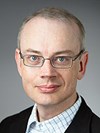Subribe to the seminar e-mail list
Subscribe to discretemathematics-seminar@lists.umu.se for notification of future seminars.
Send an email to sympa@lists.umu.se and in the subject/heading of the email write: subscribe discretemathematics-seminar
Leave the email blank.


